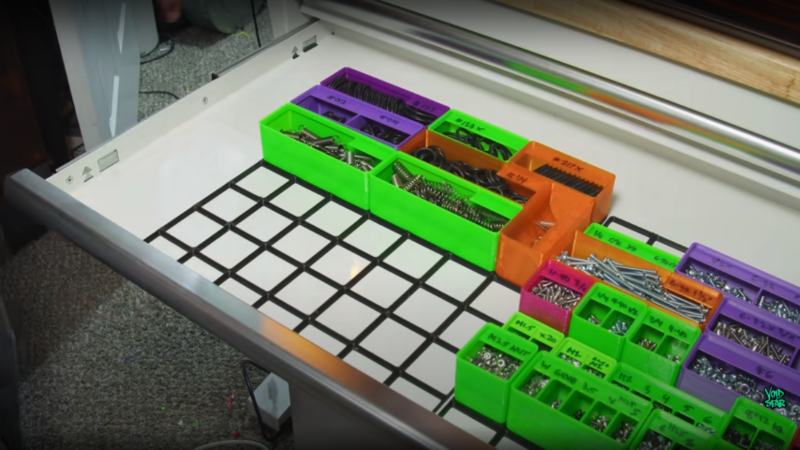One of the reasons for getting a 3D printer was to print out various types of organizers for the workshop. There are literally thousands of different designs floating around. A search for organizers quickly leads you to the modular Gridfinity system created by Zack Freedman.
Gridfinity is kind of hard to explain – it is in many ways more a community than anything else. Coming from the Open Source software world it seems familiar and comfortable. There are thousands of existing designs available to hold both things you need and things you never thought of. You can also design custom bins for your own unique needs. Gridfinity is used to store both tools and supplies. It comes close to being a universal solution for organization.
At its core Gridfinity is a specification for a baseplate and set of bins that fit into the baseplate, arranged as a 42mm grid. Yes, 42 – the answer to Life, the Universe, and Everything. The baseplate can be scaled to whatever size is needed. The bins can be customized to whatever size it needed – height, width, depth, and internal partitions. Further, you can start with a solid bin and use a CAD system to create custom cutouts to hold pretty much anything. All sizing is done in integer multiples of this 42mm grid size.

When used in drawers the Gridfinity base locks the bins into position and keeps them from moving around when you open and close the drawers – just what I need!

While I have no end of “opportunities for organization” in the workshop I decided to start with my socket drawer. Several reasons for this: sockets and ratchets are the single most heavily used tools I own. Sockets are currently organized, but the nine ratchets, three breaker bars, multiple sets of extensions, and various misc. pieces are just loose.
Sockets and ratchets are prime candidates for Kaizen-type organization where you can immediately find everything. Kaizen organization is even better for putting things up – put each socket and ratchet back in its fitted location. You can instantly tell if anything is missing. I’m already spoiled by the combination of knowing exactly where to grab for a tool and easily seeing if everything has been returned to the toolbox. This makes me more productive and less frustrated – few things annoy me more than searching for a tool I set down a couple of minutes ago!
The good news is Gridfinity is modular. The bad news is Gridfinity is modular. Much like Kaizen Foam, you can fit it to whatever space is available and do custom cutouts for each tool you want to store.
The first challenge is that my 3D printer has a maximum size of 10″ x 10″ x 10″. This means that the largest Gridfinity base or bin I can print out is 5×6 grid units. Anything larger than this will have to be broken down into smaller pieces for printing. As an example, the socket drawer will need nine of the 5×5 baseplates plus two 1×5 baseplates with a 3/8″ spacer down one side and three 2×5 baseplates with a 1/4″ spacer down one side.
Lev Mishin has created a Gridfinity Generator for Autodesk Fusion that is available from the Autodesk App Store. This Gridfinity Generator can generate arbitrary sizes of baseplates and bins with a variety of options. If you are using Gridfinity and Fusion this is a must have.
To be continued…
